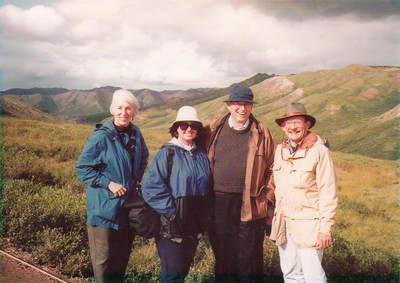 Four Adventurers: Cathy, Sherrill, Larry, Bruce
Four Adventurers: Cathy, Sherrill, Larry, Bruce Okay, why not Alaska?
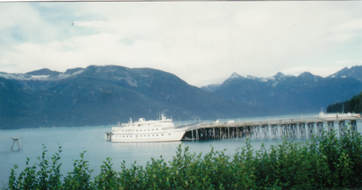 The Spirit of Discovery
The Spirit of Discovery Mary took us out to get to know her huskies. Big, beautiful, longhaired dogs with silver, gray, and white coats, they were eager to know us in return. The younger ones hurled themselves at us, cuddling and licking. It felt like being pawed by a very friendly fur coat. Overhead, feathery clouds swished slowly across the sky as if they were cleaning the blue surface. One of us asked Mary about coping with Alaska's weather, especially the winters.
"We love winter up here!" she answered. "We can go out then with the sleds and dogs. I've raised and trained teams for years," she added. "I was the first woman to cross the finish line in the Iditarod—and with the smallest team ever, only eight dogs. I couldn't live anywhere else."
Although she probably was past the age to race, it was easy to believe that this stocky, energetic woman with the graying brown hair and bright eyes would complete whatever she started.
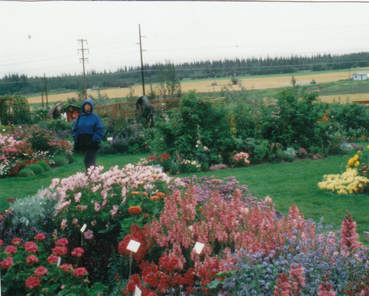 Sherrill, University of Alaska Botanical Garden
Sherrill, University of Alaska Botanical Garden "Write those down, secretary," she told me, pointing to some tags, since I always carried a pen and three by five cards for notes. "Please."
I didn't mind, because she smiled when she said it and always used the notes when we were back home.
An early morning four-hour trip on the Alaska Railway took us across icy sediment-braided rivers and richly patterned carpets of red, orange, yellow, and green tundra woven from dwarf shrubs and mosses and lichens, until we reached the Mt. McKinley Chalet, where we switched to an antique bus to climb on a single-lane road toward a snow-smothered mountain range and North America's highest peak, glacier-streaked Denali. Along the way, we glimpsed moose, bear, more caribou, white-speckled Dall sheep, and plump grouse-like Ptarmigans.
It seemed remarkable to us that we continually saw so many varieties of animals, as if they were eager for us to discover them.
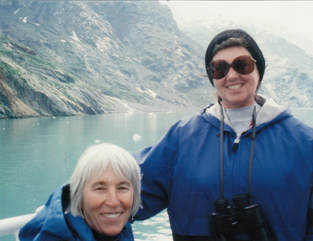 Cathy & Sherrill on the ship
Cathy & Sherrill on the ship 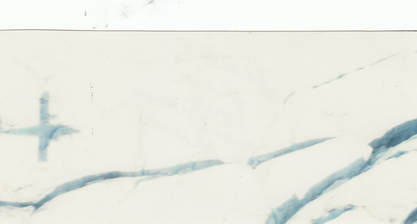 Shadow of float plane over giant glacier crevices
Shadow of float plane over giant glacier crevices "Five or more Empire State Buildings could be stacked on top of each other in some of those cracks," the pilot told us. "Hope we don't have to land down there."
The Spirit of Discovery carried us from Juneau to Skagway while we slept, then the White Pass and Yukon Railway, originally built for miners, slowly took us up the mountain, across gorges, through tunnels, past a gold rush cemetery and the remains of the original 19th century mining trail. Images from Charlie Chaplin's ordeal in The Gold Rush flashed in my head.
Three hairy mountain goats glared at us from an outcropping known as Gloomy Knob, then we came to a series of tidewater glaciers, each many miles long, hundreds of feet thick, and a good mile wide. We sailed closer and closer to several glaciers until we were just a few hundred yards from the enormous Johns Hopkins glacier, listening to creaks, snaps, and sounds of thunder as chunks from tiny to huge fell off its jagged blue face. Thousands of harbor seals sprawled on icebergs while seagulls swooped and dove, finding morsels to eat in front of the crumbling glacier faces.
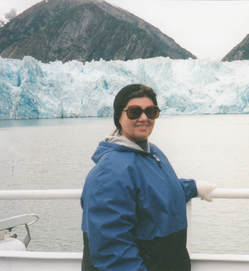 Sherrill, Sawyer Glacier, Alaska
Sherrill, Sawyer Glacier, Alaska Eventually, we cruised into Ketchikan, passed a fish factory busy at work, and saw a whale diving nearby, then docked and explored the city, including a museum that preserved the last original totem poles. We walked along a salmon-filled creek for while, and finally rode a ferry across the channel to the island with the airport and had our last view of a humpback whale. We'd often felt on our little ship as if we were merging with the nature around us, surrounded by whales, eagles, caribou, seals, even sea otters, and almost able, it seemed, to touch the calving glaciers. We could understand why people who'd chosen to live this far north felt as if they could never be happy anyplace else.
To be continued....
Please pass the posts on to anybody else you think might enjoy them.
You also might enjoy reading the new bargain-priced e-book of my first novel, The Night Action, set in San Francisco's North Beach in the early 1960s. The book is available at Amazon, Barnes and Noble, and other online retailers. Click on the title or Here for the link.
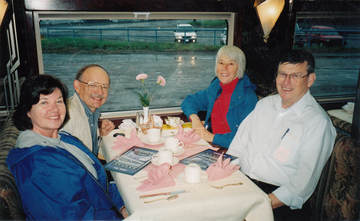
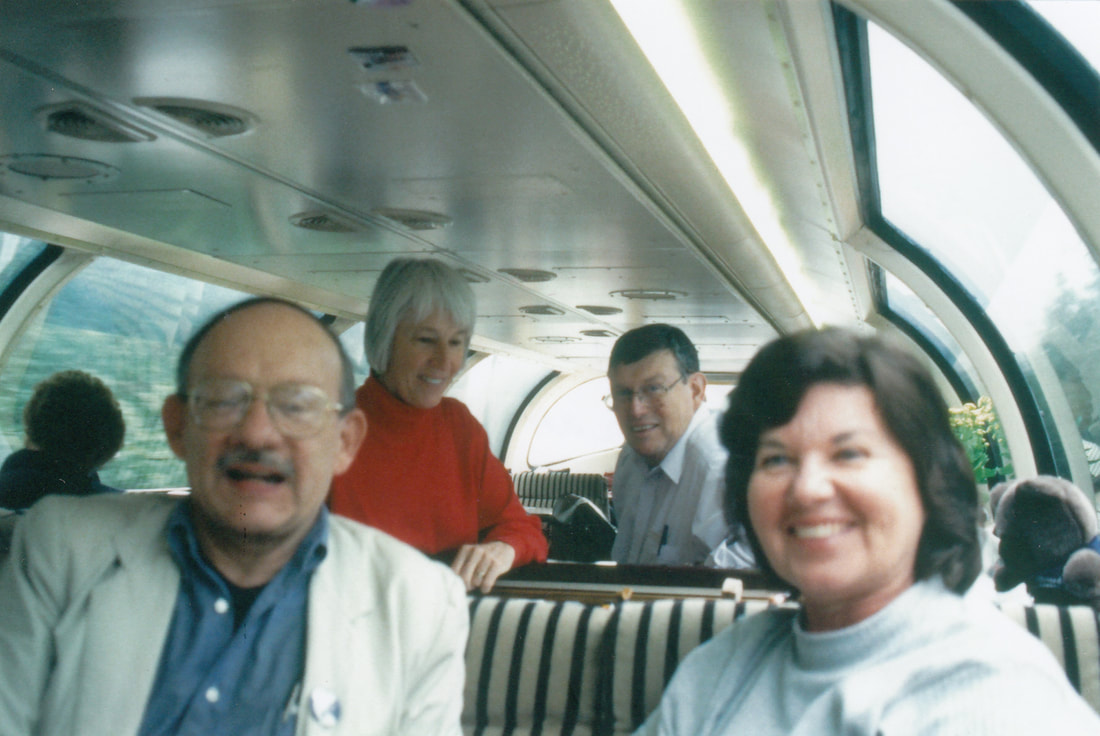
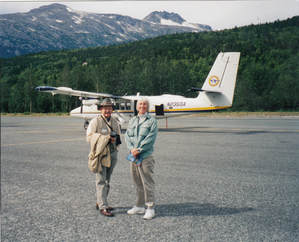
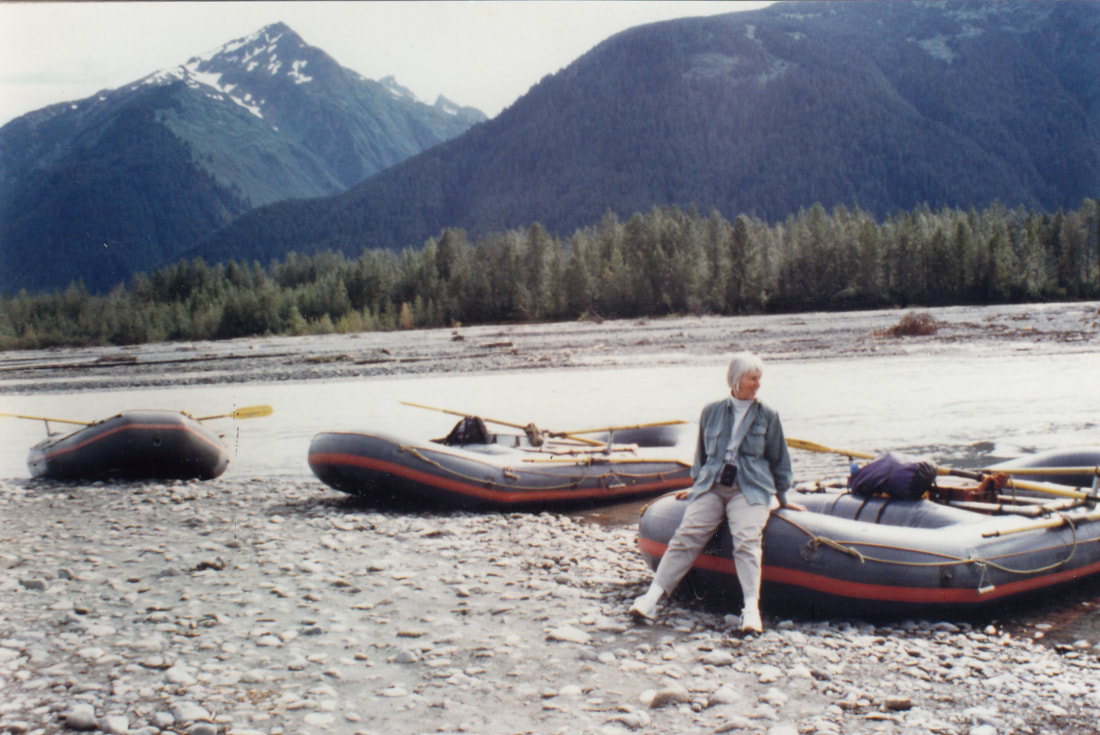
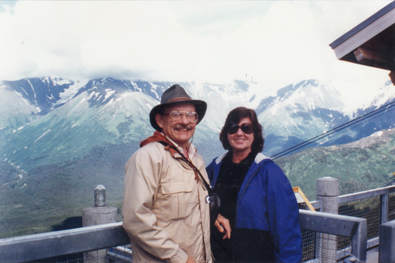
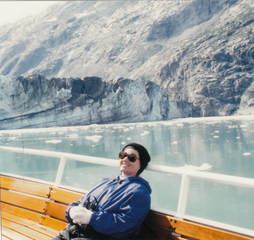
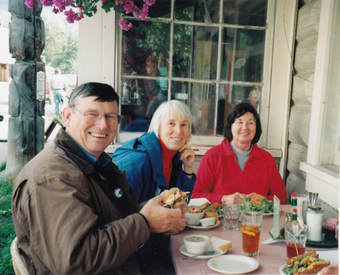
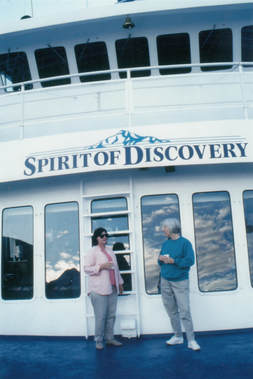
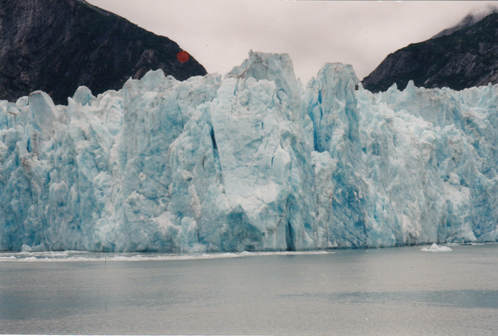
 RSS Feed
RSS Feed